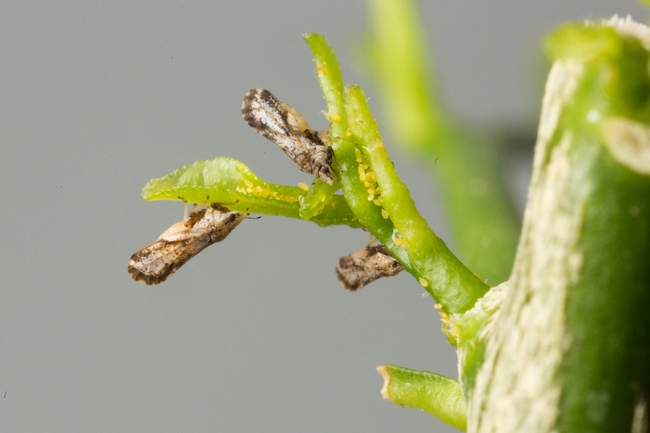Asian citrus psyllid and the devastating disease it spreads, huanglongbing, are still serious threats to commercial and backyard citrus in Fresno County. The psyllids have been found locally, including an infestation near Orange Cove last year that was treated by the California Department of Food and Agriculture. To date, aggressive efforts by ag officials, farmers, nursery managers and home growers have kept the pest under control and huanglongbing out of Fresno County.
In San Bernardino County, which is generally infested with ACP and where HLB has been detected, every Master Gardener class begins with a five- to seven-minute presentation about ACP/HLB, said MG coordinator Maggie O'Neill.
“We encourage residents to get out in their gardens to check their citrus trees for symptoms and signs of ACP and HLB weekly,” she said. “Besides, spending time in the garden is good for mental and physical health, so it's good for the garden and good for you.”
O'Neill also asks that each member of the audience tell three people, so they can, in turn, tell three more people to regularly check their citrus trees.
“Spread the word, not the pest,” she said.
Scientists believe the Central Valley climate may provide a less hospitable environment for Asian citrus psyllid, but regular monitoring of citrus trees is recommended to help preserve fruitful commercial and home-grown citrus for the future.
Using a hand lens or loop, look closely at the leaves and tender new growth. The ACP adult is the size of an aphid and feeds with its rear end tilted up at a 45-degree angle. Nymphs produce white, waxy tubules and are always found on new leaf growth or young stems. The eggs are yellow-gold and found on the newest leaf growth, nestled among unfolded leaves.
HLB cannot be detected visually until many months after infection. The first symptom is blotchy yellow mottling of leaves that is not the same on both sides of the leaf. This looks different from the typical signs of nutrient deficiency, which causes a similar pattern of yellowing on both sides of the leaf.
Report signs and symptoms of ACP/HLB to the CDFA hotline at (800) 491-1899.
The University of California manages a website for home citrus growers with a map showing areas where Asian citrus psyllid have been found in California and detailed information on options for reducing psyllid populations around your home, such as managing ants, protecting natural enemies and applying insecticides.
